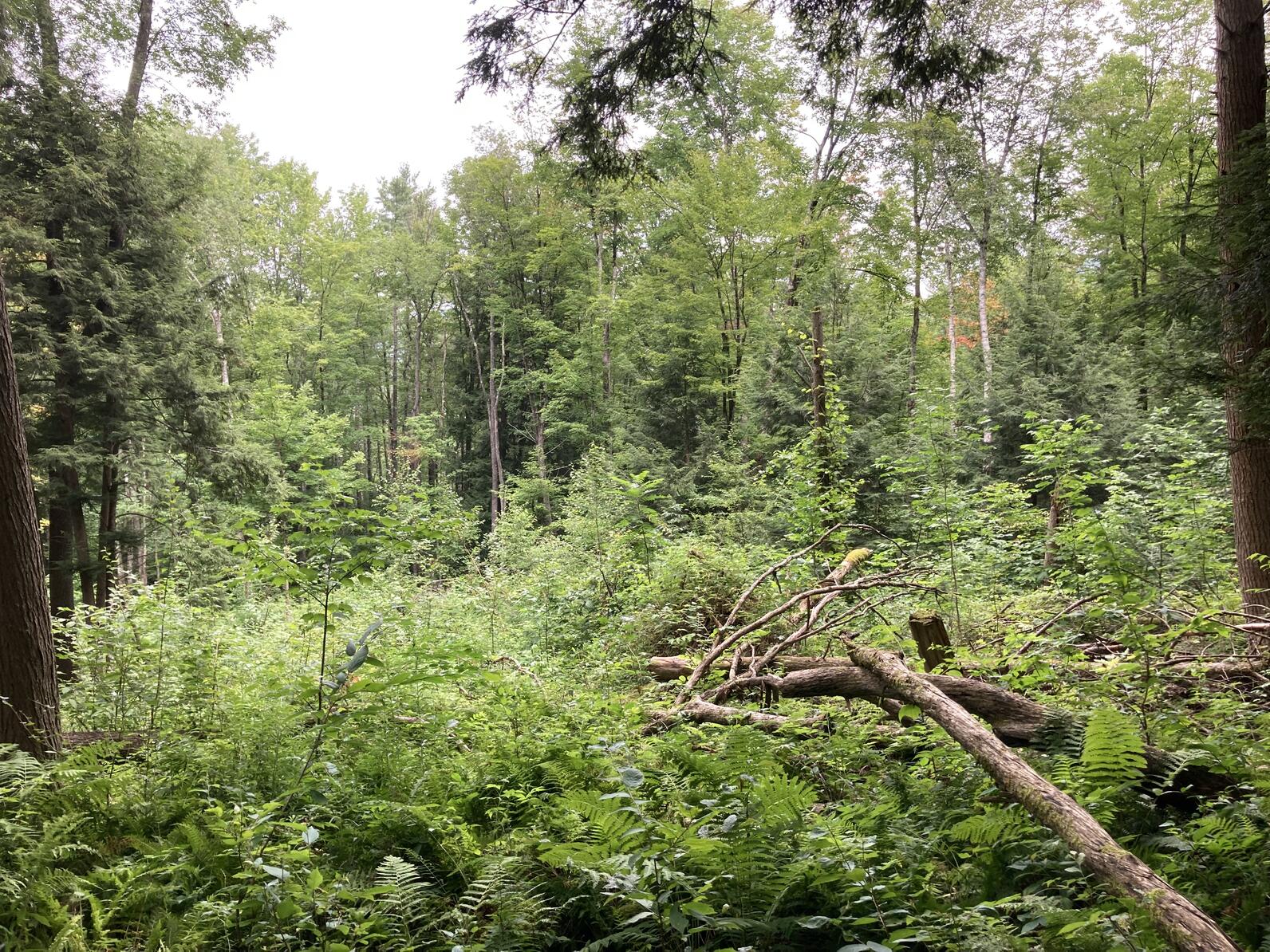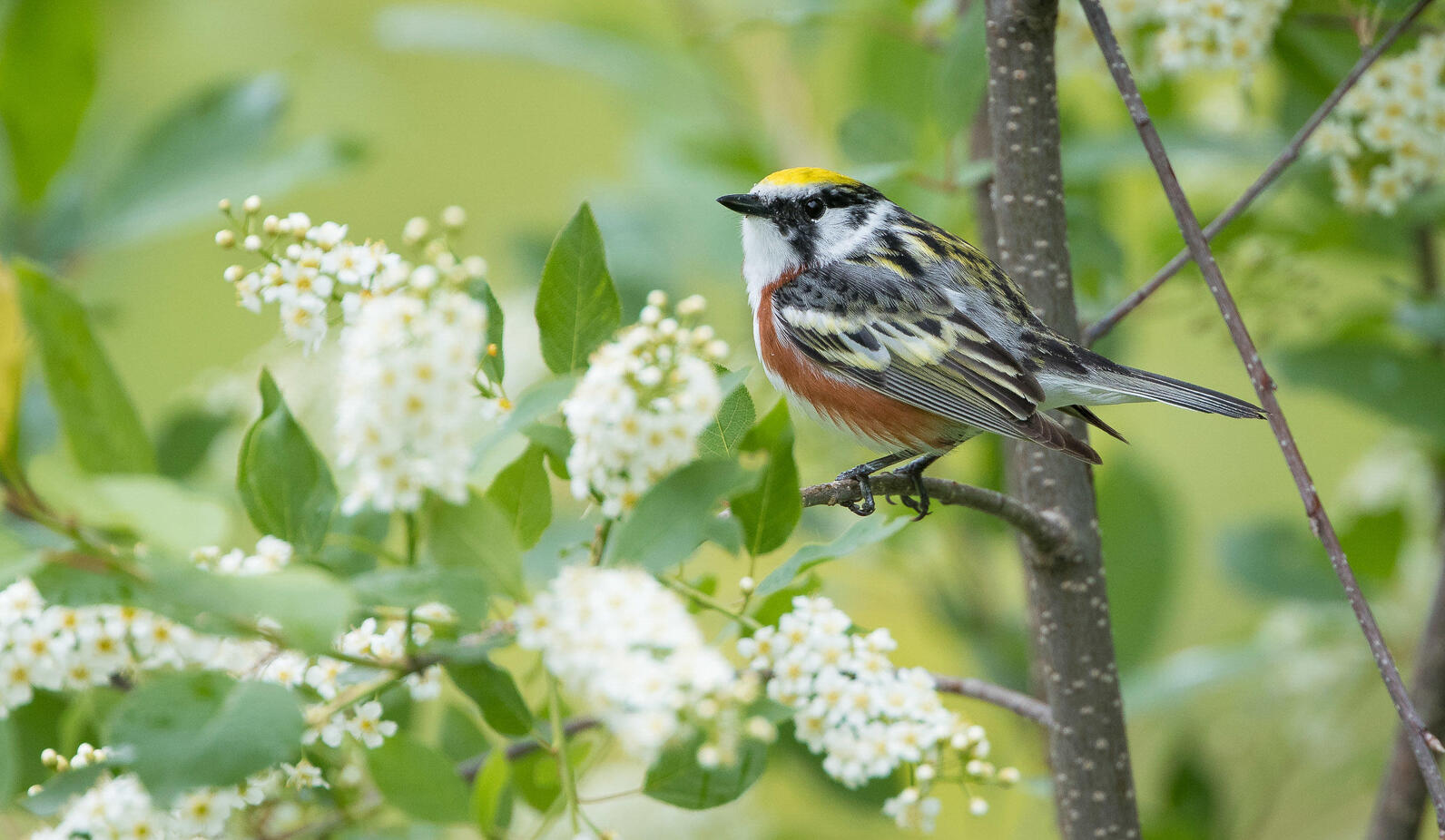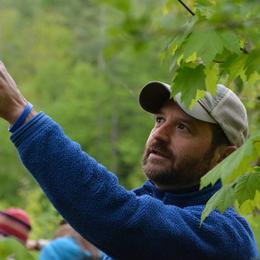Over the years, I have had the distinct pleasure of visiting with hundreds of people who are making management decisions affecting Vermont’s forested landscape. Frequently the conversations around managing the forest with birds and other wildlife in mind hit on a common question: is it better to do nothing and let the forest to its own devices, or is active management, including the harvesting of trees, an appropriate choice? While there is no right or wrong answer to that question, invariably the conclusion to meeting a variety of forest stewardship goals is that in many situations, active forest management is not only desirable for enhancing habitat, it can be a necessity.
Every spring, thousands of migratory birds arrive back in the forests of Vermont after spending the winter in places as far away as South America. Once here they seek out suitable habitat providing food and cover for raising the next generation of their species. What does suitable habitat look like? Some of the most commonly known habitat features are standing dead trees (snags), cavity trees, and woody material on the forest floor. These forest attributes help support birds such as Yellow-bellied Sapsucker, Dark-eyed Junco, and Winter Wren.
Less emphasis is given to forest regeneration as a critical habitat component. Well-established regeneration, in the form of seedlings and saplings, contribute to forest structure. In the language of habitat, this is known as understory and midstory respectively. These two layers of the forest provide necessary nesting and foraging sites for birds ranging from Black-throated Blue Warbler and Wood Thrush to Chestnut-sided Warbler and Veery. Which of these species benefit through regenerating the forest depends to a large degree on the overall forest stand conditions. Forest management, and more specifically the silvicultural treatments being implemented, helps determine that outcome.
There are a variety of silvicultural treatments intended to regenerate a forest stand. Selection of the most appropriate method is guided by multiple factors including forest type, site conditions, desired tree species to regenerate, and in our case, the bird species targeted for habitat enhancement. For the purposes of this exploration we will lead with the birds.

Black-throated Blue Warbler, Wood Thrush, Scarlet Tanager
These species belong to a cohort of mature forest nesting birds. They typically nest in northern hardwood and mixedwood forests with a high, closed canopy. Black-throated Blue Warblers seek out dense pockets of understory vegetation (seedlings and saplings less than 5-6 ft. in height) in which to place their nest, whereas Wood Thrush occupy the midstory (saplings 6-20 ft. in height). Scarlet Tanager nest higher in the forest canopy than most other birds and show a preference for oaks and hemlock.
Understanding this helps in deciding what types of regeneration treatments can help meet our interests. Maintaining a significant amount of the trees that create the high, closed canopy is important, however there is also a need to create some small openings in the canopy in order for sunlight to reach the forest floor and promote regeneration, and ultimately, the understory and midstory so important to high-quality bird habitat. Single tree and small group selection, with group sizes up to one acre, are common uneven-aged silvicultural systems that can help achieve the desired regeneration goals. Ecologically-based silvicultural systems are becoming more common. In this category "expanding-gap irregular shelterwood," with gaps up to one acre in size, shows great promise for developing the forest structural conditions supporting birds. Do not expect great habitat the first year after harvest however. It can take three or more years before regeneration to really become established.
Chestnut-sided Warbler, White-throated Sparrow, Mourning Warbler
These species belong to a cohort of young forest nesting birds. They typically nest in northern hardwood and mixedwood forests where an open canopy over an area of at least one acre with plenty of sunlight hitting the forest floor. As a result, vegetative growth tends to be very dense and “scrubby.” In the first few years after harvest, raspberry and blackberry may be dominant. This is ok since Mourning Warbler thrive in these conditions. Over time, as tree seedlings establish and grow in height, the habitat conditions get even better and support a greater variety of bird species, such as Chestnut-sided Warbler. This desirable young forest habitat is fleeting, however. Quality conditions peak around 8-12 years post-harvest. By 15-20 years, the low dense vegetation begins to get shaded out. As it goes away, so does this cohort of birds.
The regeneration treatments to create these conditions can best be described as being more intensive. Whereas smaller openings in the forest canopy were the key to the mature forest bird community, larger openings, greater than one acre, are more suitable for young forest nesting birds. Group selection (1-2 acres), patch cuts (2-5 acres), and clearcuts (5+) are all appropriate silvicultural methods. In addition to creating nesting habitat, these larger areas of regeneration are also used by mature forest nesting birds as a place to bring their young later in the summer. This is in part due to the high amount of protective cover as well as often-abundant fruit resources, a critical food resource leading up to fall migration.

Regardless of what bird species are being considered through forest regeneration practices, it is always important to engage with a licensed forester. These trained professionals will help ensure that management objectives are being met using the most appropriate methods. A listing of Vermont Woodlands Association licensed foresters can be found at https://www.vermontwoodlands.org/guide-to-current-use/#licensed-consulting-foresters-list
For more information and resources on forest birds, be sure to visit Audubon Vermont’s Healthy Forests website https://vt.audubon.org/healthy-forest and the Woods, Wildlife, and Warblers website http://www.woodsandwildlife.org/







